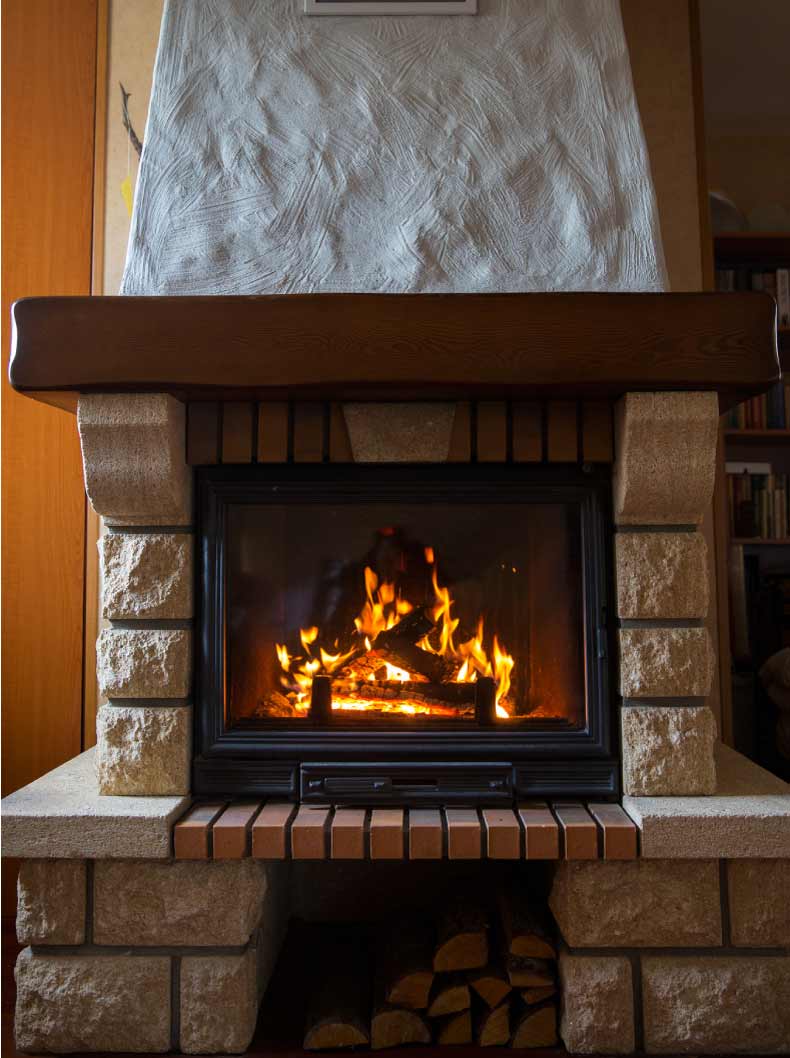Helping Clients with Chimney Sweep in Tulare and Kings County Since 1992.
chimney sweep in Tulare and Kings County, ca
Are you looking for a professional and reliable chimney sweep in Tulare or kings county?
Our team of experts is dedicated to ensuring that your family remains safe from any unnecessary danger due to poor maintenance.


You can trust us to help you save time, energy, and money. With our excellent customer service, quality workmanship, and competitive rates – we have what it takes to keep everything running smoothly! All our services are tailored specifically with your safety in mind so you can feel secure when using either feature.
Schedule an appointment today with RC Chimney & Dryer Vent –and get the peace of mind knowing that your home is free from dangerous debris or materials!
chimney sweep in Tulare and Kings County, ca
Chimney FAQ's
How often should my chimney be cleaned?
The evaluation is necessary to ensure that the chimney has an adequate draft, is free of debris, cracks, and creosote build-up, and has no loose or missing mortar joints. In general terms, a chimney should be swept for every cord of wood burnt.
A "cord" of wood is a stack 4 ft high by 4 ft wide by 8 ft long (128 cubic feet). A "face" cord is split wood stacked the same as a full cord but the log lengths are generally in the range of 16"-20" long (rather than 24" as in the case of a full cord).
What is Creosote?
This glazed creosote is recognizable by its dense, shiny tar-like appearance. It's wood tar that has become baked onto the walls of the chimney or flue lining. If this glazed creosote catches fire it could result in a dangerous chimney fire.
As professional chimney sweeps, we have the necessary Third Stage Creosote Remover products to dissolve the baked-on resins from masonry, metal, and stainless steel surfaces by reducing the hard glazed substance to loose, brushable soot.
What causes creosote build up?
Burning unseasoned firewood. Unseasoned firewood has the fresh clean look of new lumber at the local building supply store. Any wet wood is bad wood! When it's wet, it creates much less heat and fails to burn up a lot of the available fuel in the wood. The "smoke" of unseasoned wood is heavily laden with unburned creosote.
The moisture content in the wood determines how much heat the fire puts out, and how much creosote will build up in your chimney. Be sure to use only properly dried seasoned wood that will provide you with pleasant, trouble-free heat. If you split a piece of seasoned wood, it would be white on the inside.
If split into quarters it has cracks running through each piece and a lot of little cracks on the inner rings. Tap the wood with a key or coin. Seasoned wood gives a sharp, resonant sound, like a baseball bat. Unseasoned (bad) wood sounds dull and is much heavier in weight than properly dried wood.
*** Never burn trash, magazines, newspapers, plastics, or other materials not designed to burn in fireplaces or stoves. Doing so is illegal and hazardous.
How to you clean a chimney?
We first check creosote buildup in the chimney flue and smoke chamber. We then set up the vacuum, cover the fireplace opening, and start the dust control vacuum.
The chimney is swept from above with special brushes, which are attached to flexible poles. We then brush up the smoke chamber & vacuum behind the damper.
The firebox is cleaned by hand using wire brushes. The remaining soot and ash on the firebox floor are vacuumed.
NOTE: The procedure varies for pre-fabricated fireplaces, freestanding stoves, and stove inserts.
Emphasis is still on being thorough with the sweeping and evaluation and keeping the area clean. Some chimney tops can be inaccessible either due to steep roofs or fragile tile.
Does the cleaning cause a mess in my home?
We can only brush the chimney as fast as our vacuum collects the dust. The dirtier the chimney flue, the slower we brush.
Is it ok to burn artificial logs like Duraflame and the Chimney Sweeping Log?
Many people have questions about burning artificial logs. Convenience is their strong suit and in general, they're fine when time is an issue and you want a quick fire without all the fuss of natural firewood.
They should be burned only one at a time and only in an open fireplace. Be sure not to go about poking them and moving them around once they are burning since they may break up and the fire could get a bit out of control. Be sure to carefully read the directions on the package.
The use of a Chimney Sweeping Log is no substitute for manual cleaning and inspection of a fireplace.
The log itself notes the following: Regular chimney inspections are always recommended. The CSL will not tell you if your chimney is blocked or has any kind of structural damage. The Chimney Sweeping Log does not take the place of inspection and professional cleaning.
What are you looking for when you do the chimney inspection?
We check for code compliance as to construction and clearances to combustible materials. If you have an insert or freestanding stove we check for proper installation.
An inspection includes: Checking the firebox for damaged brick and missing or crumbling mortar. Check the damper for cracks, pitting, or rusted-out sections. Look for and remove debris that may restrict airflow. Check for broken or damaged bricks or flue liners.
We also check to see if you already have a chimney cap. Any questionable conditions will be noted on our 21-point condition report and discussed with the homeowner.







chimney sweep in Tulare and Kings County, ca
professional Chimney and Dryer Vent Services
Chimney Sweep
Chimney Cleaning
Dryer Vent

